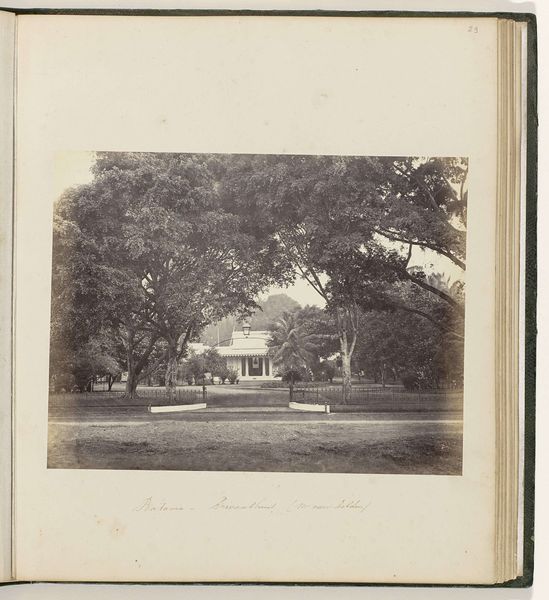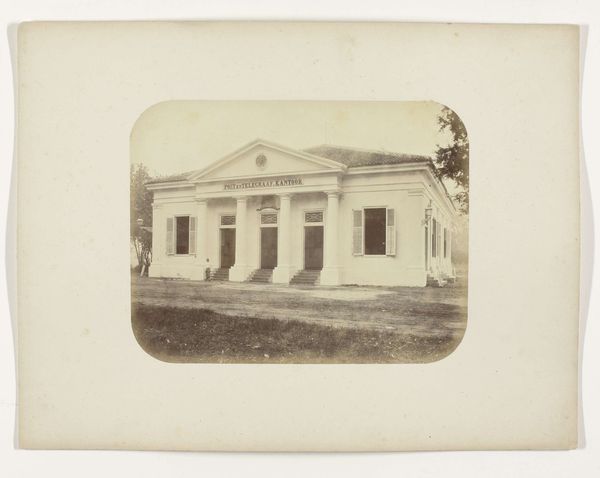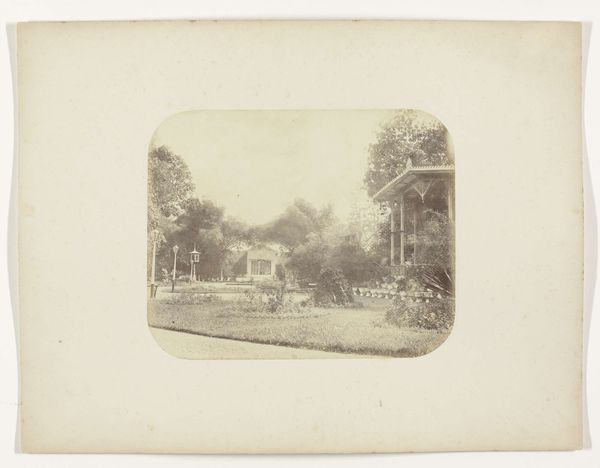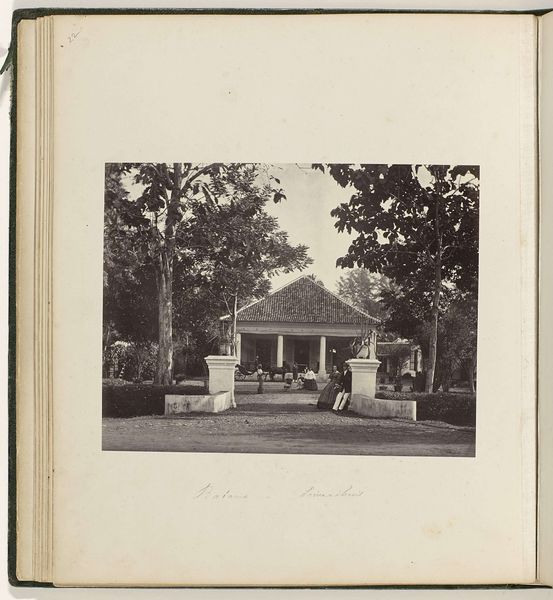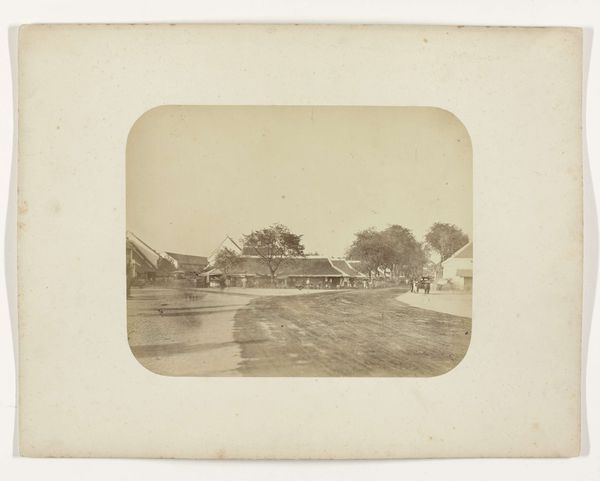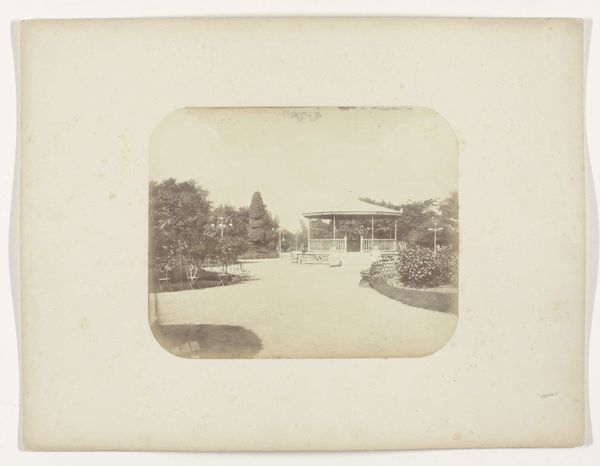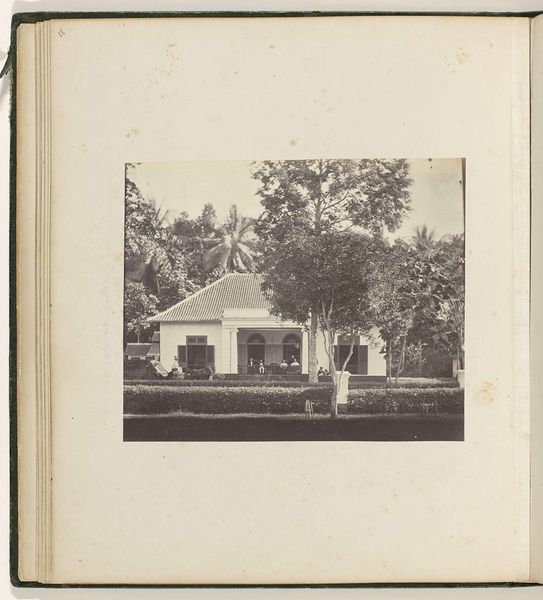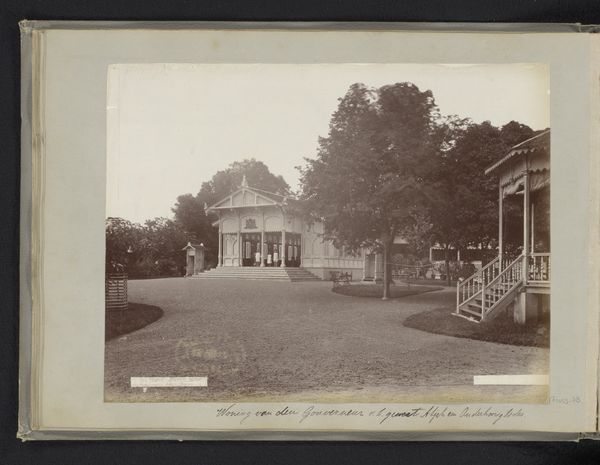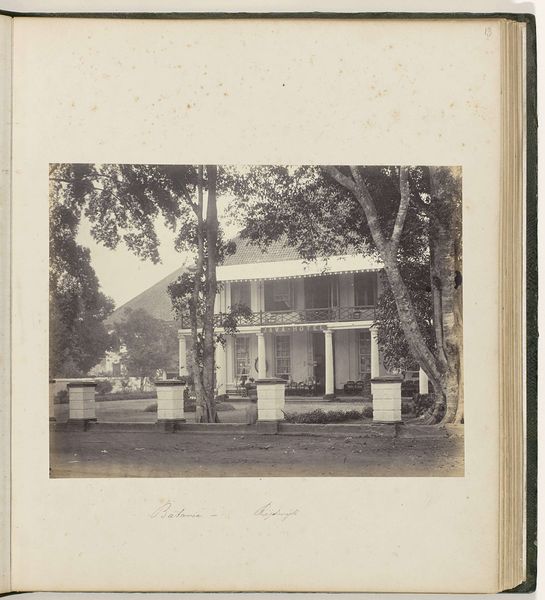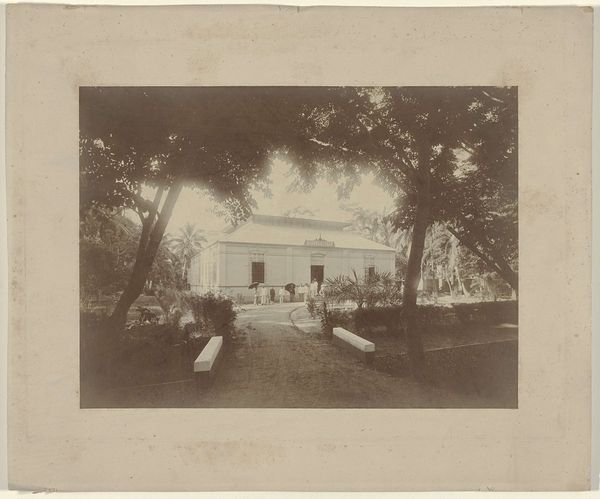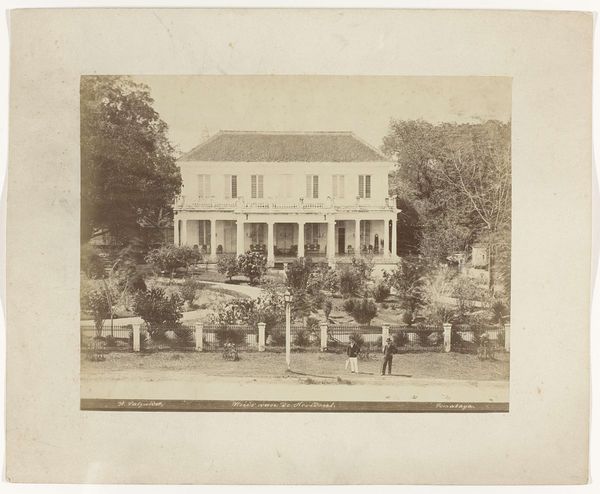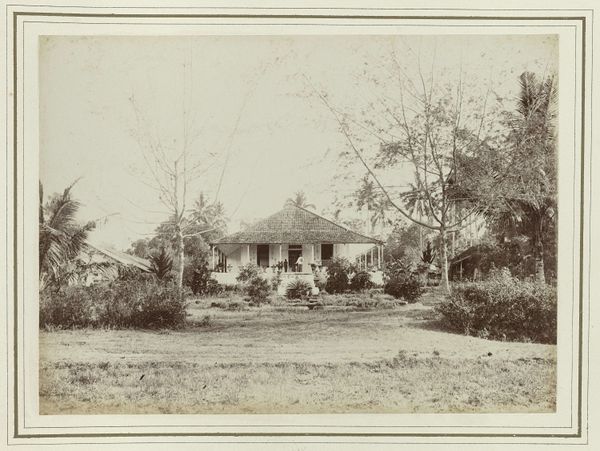
photography, site-specific, albumen-print
#
landscape
#
photography
#
orientalism
#
site-specific
#
cityscape
#
albumen-print
Dimensions: height 22.3 cm, width 27.8 cm
Copyright: Rijks Museum: Open Domain
Curator: What a remarkably still scene. There's a sort of sepia-toned tranquility to this photograph. Editor: Indeed. This albumen print by Herman Salzwedel, taken between 1876 and 1884, offers a view of "The house of a well-to-do Surabayan," in what was then the Dutch East Indies. The albumen process, of course, involving egg whites... the delicate tones are characteristic. Curator: I am struck by that implied colonial gaze though. It's presented almost as a... specimen. This 'house' as opposed to a home with its residents. Where's the life? Editor: Precisely. The absence is deafening, isn't it? These colonial images, often commissioned or created for Western audiences, served a clear purpose. Beyond documentation, they projected power and a particular vision of the East, often highlighting wealth to justify trade interests. Curator: Consider the labour behind this image, too. Not just Salzwedel and his equipment, but those involved in preparing the albumen, constructing and maintaining that house… their stories are essential, invisible though they may be here. The house itself is a monument to exploitative labour practices, really. Editor: The columns especially feel significant. Attempting a kind of European aesthetic in the east, the clean and classicizing influence betrays its intention. Even the choice of photographing a home that openly imitates this kind of 'civilized' architectural sensibility, for audiences at home, speaks volumes. Curator: So the photograph becomes a commodity as well, facilitating the trade of not only goods but also cultural capital. These houses, constructed with readily available resources, also functioned as symbols of authority to shape cultural perspectives for profit. Editor: Exactly, and seeing it framed now within the context of a museum collection… that act of selection, that conferral of value… reinforces a historical narrative, it asks us to think about those institutional choices as well as what we see in the print itself. Curator: Yes, absolutely. Considering this specific time, it’s essential to deconstruct this image and think about how to reconstruct its narrative, so viewers can connect with a richer, multi-dimensional story and the lives connected to this captured image. Editor: A valuable provocation—it certainly urges a closer examination.
Comments
No comments
Be the first to comment and join the conversation on the ultimate creative platform.

